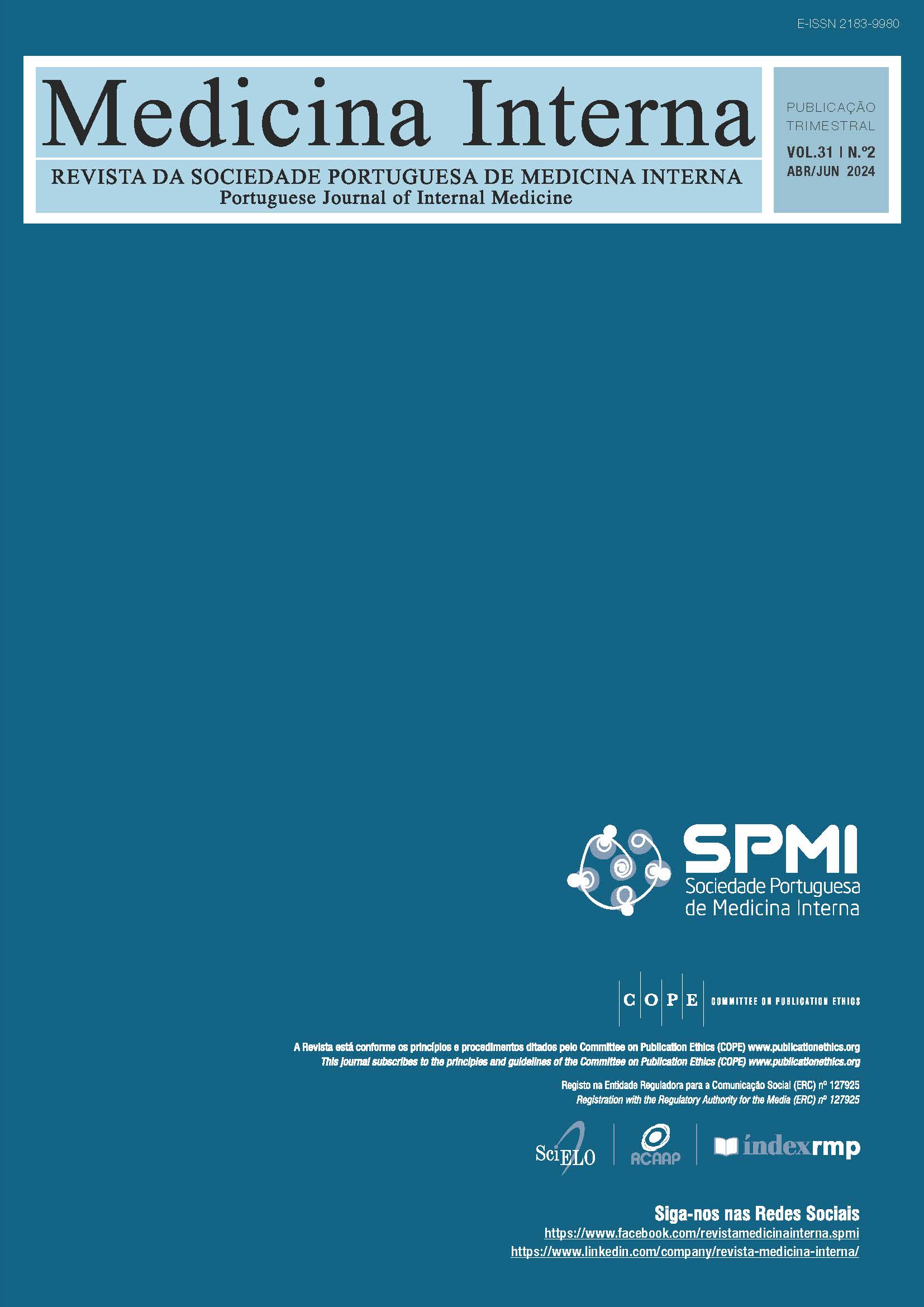Emergency Department Management of Direct Oral Anticoagulants Agents
DOI:
https://doi.org/10.24950/rspmi.2493Keywords:
Administration, Oral, Anticoagulants, Emergency Service, Hospital, Factor Xa InhibitorsAbstract
Introduction: Nowadays, direct oral anticoagulants are
commonly used and Emergency Department response regarding its adverse effects and its reversion when invasive procedures are needed is crucial. Regular coagulation tests correlate poorly with plasma concentrations of direct oral anticoagulants, so specialized anti-Xa and anti-IIa assays are necessary.
Methods: In this study, we analyzed all the Emergency Department electronic medical records corresponding to patients that had direct oral anticoagulants quantification assays performed during a six-month period.
Results: Of the 88 admissions evaluated, the main indications for anticoagulation were atrial fibrillation or flutter and previous thrombotic events. Direct oral anticoagulants quantification was performed mainly due to hemorrhagic events and need for urgent invasive technical procedures. At admission, most patients had direct oral anticoagulants concentrations > 50 ng/mL and more than half had their anticoagulation suspended at discharge (pending further evaluation in an outpatient setting). 26% did prothrombin complex and 5% did Idarucizumab, due to clinical severity. None of the patients did Andexanet alfa due to its unavailability. Regarding readmissions within 6 months, only 5 patients were readmitted, with recurrent bleeding or anemia and no thromboembolic events were registered.
Conclusion: Direct oral anticoagulants quantification minimized unnecessary complications associated with urgent surgical and invasive technical procedures. Creating Emergency Department protocols, accessible to all specialties, regarding direct oral anticoagulants quantification and its main indications, should be a priority in anticoagulation management, guiding clinical decisions and reducing duration of hospital stay, comorbidities and mortality.
Downloads
References
De Marco F, Valli G, Ancona C, Ruggieri MP. Management of bleeding in patients on direct oral anticoagulants in emergency department: where we are and where we are going. Eur Heart J Suppl. 2023;25:C15-9. doi: 10.1093/ eurheartjsupp/suad004.
Dunois, C. Laboratory Monitoring of Direct Oral Anticoagulants. Biomedicines. 2021;45: 1-15. doi: 10.3390/biomedicines9050445
Adcock DM, Gosselin RC. The danger of relying on the APTT and PT in patients on DOAC therapy, a potential patient safety issue. Int J Lab Hematol. 2017;39:37-40. doi: 10.1111/ijlh.12658.
Yee J, Kaide CG. Emergency Reversal of Anticoagulation. West J Emerg Med. 2019;20:770-83. doi: 10.5811/westjem.2018.5.38235.
Conway SE, Hwang AY, Ponte CD, Gums JG. Laboratory and Clinical Monitoring of Direct Acting Oral Anticoagulants: What Clinicians Need to Know. Pharmacotherapy. 2017;37:236-48. doi: 10.1002/phar.1884.
Levy JH. Discontinuation and Management of Direct-Acting Anticoagulants for Emergency Procedures. Am J Med. 2016;129:S47-53. doi: 10.1016/j.amjmed.2016.06.005.
Douxfils J, Ageno W, Samama CM, Lessire S, Ten Cate H, Verhamme P, et al. Laboratory testing in patients treated with direct oral anticoagulants: a practical guide for clinicians. J Thromb Haemost. 2018;16:209-19. doi: 10.1111/jth.13912.
Cervellin G, Benatti M, Bonfanti L, Lippi G. Quality and safety issues of direct oral anticoagulants in the emergency department. Semin Thromb Hemost. 2015;41:348-54. doi: 10.1055/s-0035-1549090.
Cuker A, Siegal D. Monitoring and reversal of direct oral anticoagulants. Hematology Am Soc Hematol Educ Program. 2015;2015:117-24. doi: 10.1182/asheducation-2015.1.117.
Downloads
Published
How to Cite
Issue
Section
Categories
License
Copyright (c) 2024 Internal Medicine

This work is licensed under a Creative Commons Attribution 4.0 International License.
Copyright (c) 2023 Medicina Interna






